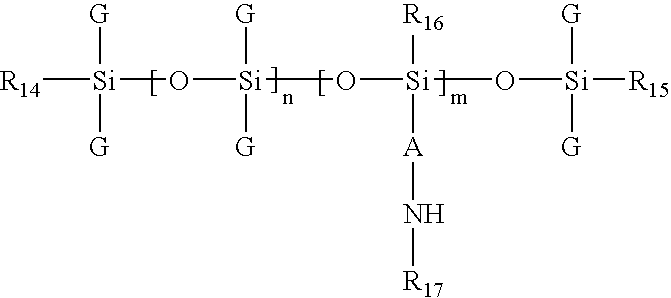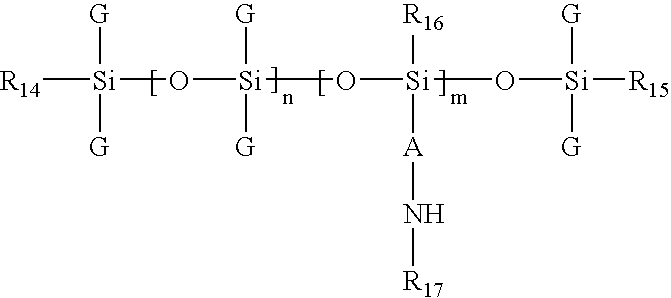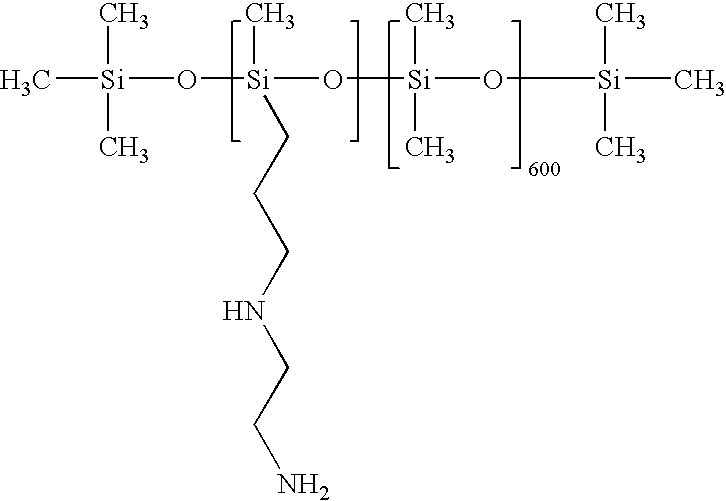Fiber and hair fiber conditioning treatment composition
a technology of fiber and hair fiber, applied in the direction of detergent composition, hair cosmetics, detergent compounding agents, etc., can solve the problems of less manageable hair, reduced aminosilicone deposition, and inability to provide the same level of benefit in hair condition
- Summary
- Abstract
- Description
- Claims
- Application Information
AI Technical Summary
Problems solved by technology
Method used
Image
Examples
example 1
[0030]
example 2
[0031]
wherein R1 and R2 are a mixture of OH and OMe.
[0032] Preferably, the functionalized silicones of the present invention have a particle size of greater than 500 nm, preferably greater than 1 μm, more preferably greater than 2 μm. Particle size is determined according to the test method described hereinbelow.
[0033] The composition according to the present invention may comprise from 0.1% to 10% preferably 0.3% to 9%, more preferably 0.5% to 8%, most preferably 1% to 7.5% by weight of the functionalised aminosilicone polymer.
[0034] According to the present invention, the fiber conditioning treatment compositions preferably further comprises a non functionalized aminosilicone polymer. It has been surprisingly found that the benefits of the functionalized aminosilicone of the present invention can still be maintained if a portion of the functionalized aminosilicone is replaced by a non functionalized silicone. This has the advantage of reducing the cost associated with the comp...
PUM
| Property | Measurement | Unit |
|---|---|---|
| time | aaaaa | aaaaa |
| particle size | aaaaa | aaaaa |
| particle size | aaaaa | aaaaa |
Abstract
Description
Claims
Application Information
 Login to View More
Login to View More - R&D
- Intellectual Property
- Life Sciences
- Materials
- Tech Scout
- Unparalleled Data Quality
- Higher Quality Content
- 60% Fewer Hallucinations
Browse by: Latest US Patents, China's latest patents, Technical Efficacy Thesaurus, Application Domain, Technology Topic, Popular Technical Reports.
© 2025 PatSnap. All rights reserved.Legal|Privacy policy|Modern Slavery Act Transparency Statement|Sitemap|About US| Contact US: help@patsnap.com



